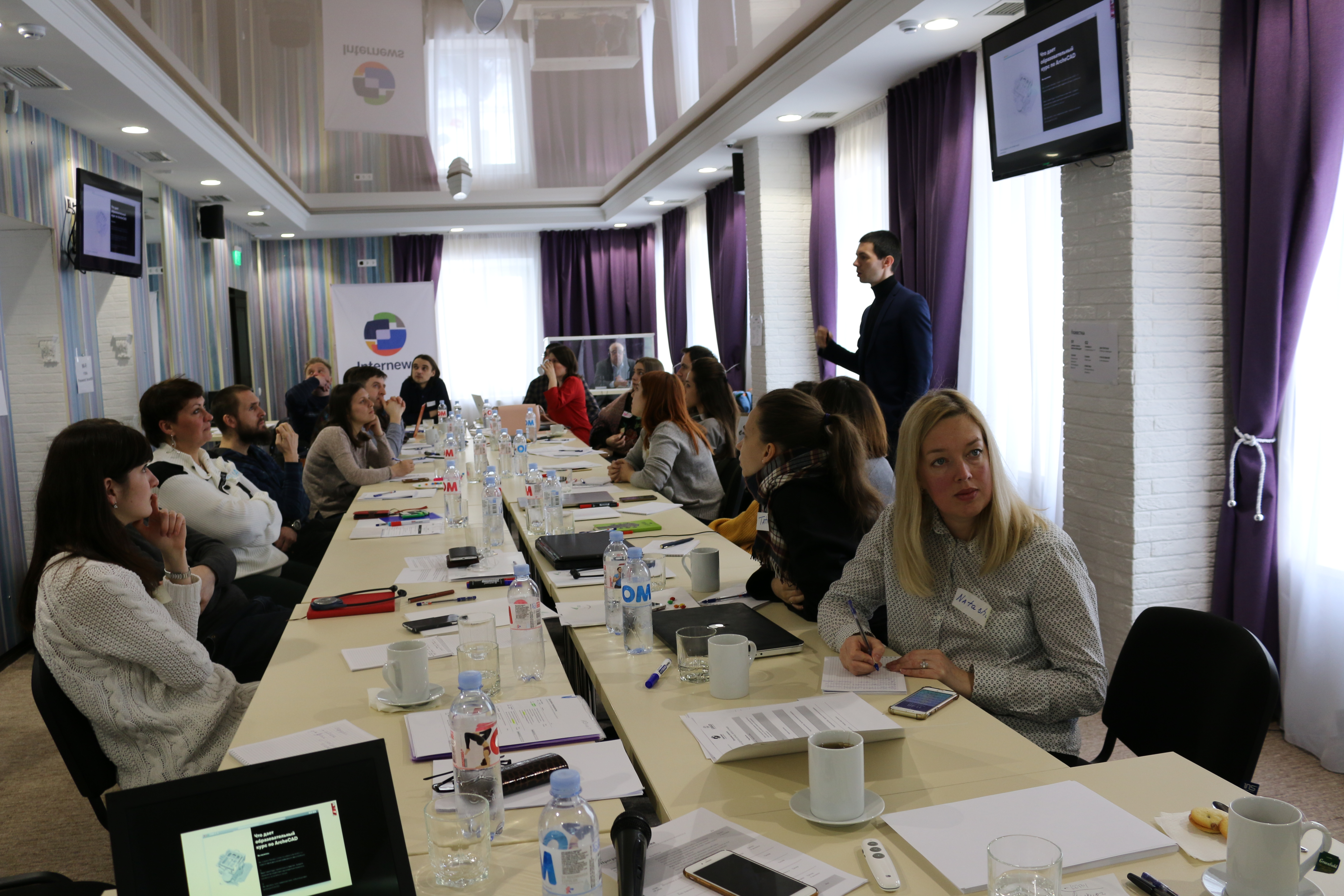
The trainer, Andrey Misyurev, visualisation and communication expert from St. Petersburg, Russia, presented to journalists from different media institutions from the Republic of Moldova various ways of data visualisation, provided concrete examples and established, together with the participants, the weaknesses and strengths of each example.
"Why do we need visualisation? To give readers the possibility to decide from the very beginning whether the information is important to them, how much time they will need to read it, and generally, to decide if the information is worth focusing on it. The first impression is extremely important when trying to maintain the reader's interest on one subject or another. To accomplish this, different techniques are used, such as chosing the color and size of the characters, on highlighting the main ideas, centering or distributing information by blocks, depending on its value etc.’, mentioned the expert.
Accoring to Andrey Misyurev, using such techniques, journalists or media institutions have the possibility to convey to the reader their own attitude towards one topic or another. ‘To make the information attractive to the reader, not only the content matters, but also the form in which it is provided. An information that is presented correctly visually will have a much greater effect than a monotonous one,’ believes the expert.
Participants learned how to efficiently use the space in order to create a successful composition from various components – photos, title, subtitle, data, lead, inserts, etc. They also learned on what main elements they must focus, how to keep the intrigue, and what interactive possibilities they can provide to readers in order to attract their attention. A series of tools, such as Juxtapose, Playbuzz, Tilda, or Knightlab, helped them discover new ways of maintaining the reader's interest in reading.
The training was also a good opportunity for participants to develop their practical skills that are necessary to visualise journalistic materials and increase interaction with readers. After discovering the virtual tools that can help them present long read articles in a more attractive and interactive form, the participants in the training practiced different ways of using them. Set up teams of two persons, they had one hour to view an article and use of the new acquired knowledge.
The contest even had a prize – two subscriptions for Infogram Platform, offered by the Independent Journalism Center. The prize went to journalists from www.newsmaker.md Tatiana Bulgac and Natalia Melnic, who managed to integrate, in the best way, the new visualisation tools in a previously written material about traveling in Europe.
The training was useful for journalists; they learned how to diversify their activity, but also saw their own materials from a different perspective. As a result, they are aware that in order to impress the reader a good content is not enough — they also need a new interactive method for its visualisation. Journalists understood they can create colorful materials. Their impressions about the training confirm once more that all the goals were achieved.
Felicia Nedzelschi, Agora.md: It's nice to feel yourself not only as a journalist, but also as a designer. After all, we all want to make articles that look nice and capture the readers’ attention. Today's training showed us that we can do it.
Sergiu Culeac, KissFM: For me, this training is part of what we say ‘practice is the best master’. During the first day we dealt with a lot of theoretical aspect, but the next day was full of discoveries for me, a person fully devoted to the radio. I understood that even ordinary people can use some interactive tools and that it is not so complicated to give a shape to an article and make it attractive for readers.
Natalia Sergheev, Radio Free Europe: I have always wanted to attend such a training in order to learn how to use visualisation tools like Tilda. I am also happy to discover Playbuzz – a modern, easy-to-use tool that does not require too much intellectual effort, but is able to impress. Thank you for the opportunity to make us feel like some kind of developers.
Valeriu Ciorba, Moldova digital: During this training I understood that we can create a fairy tale from a black and white material. And this can be done quite easily. All we need is desire and a little bit of creativity.
Tatiana Bulgac, Newsmaker.md: I have always liked the practical aspect more than than the theoretical one, and today, we managed to prove this. Although I had known about the Playbuzz tool, I did not have time to study it. Now I realized that it was an important tool, which should be used in order to attract readers.
Mariana Colun, Centre for Investigative Journalism: Obviously, it’s more interesting when you try to implement in practice what you have learned. I hope we will be able to apply the new tools on our site. They are certainly attractive and pleasing to the eye.
Ecaterina Alexandr, Ziarul de Garda: I assumed that we would learn interesting things at this training, but the things that happened over these two days exceeded my expectations. I hope that new skills and knowledge will be useful to me in the future. So far, I have never worked with visualisation of information and it seemed extremely complicated. Today, I understood that with a bit slight of hand, I can do this too.
The training is organized by the Independent Journalism Center, as partner of ‘Media Enabling Democracy, Inclusion and Accountability in Moldova’ (MEDIA-M) project, funded by USAID and implemented by Internews.
The MEDIA-M project intends to promote the development of an independent and professional press in Moldova, give citizens the access to a range of perspectives and contribute to creation of a media sector that will be more resistant to political and financial pressures.










